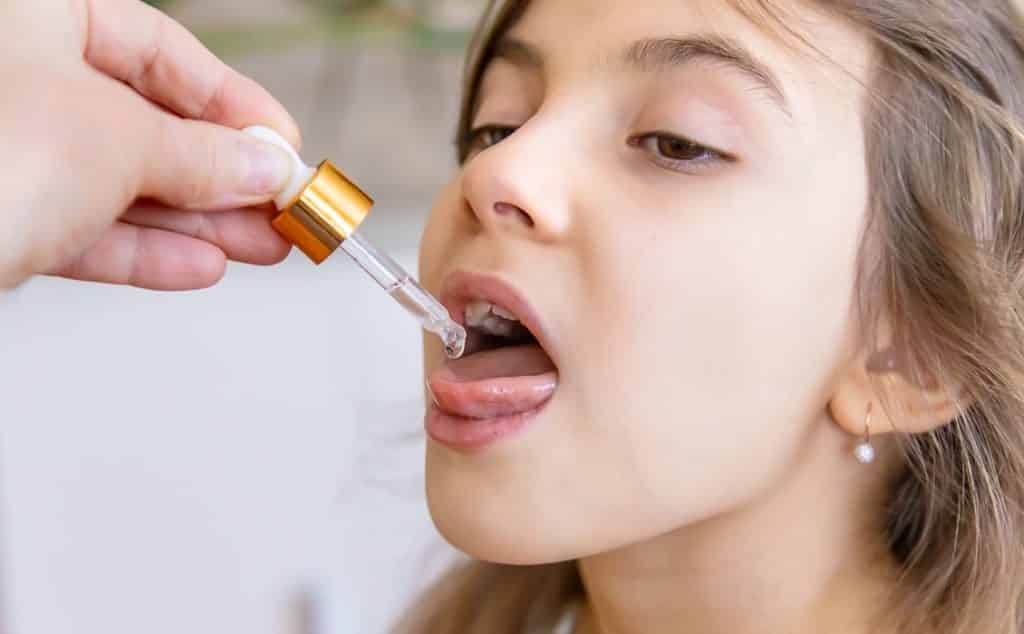DESENSITISATION: WHAT IS IT?
Classical immunotherapy or desensitisation consists of the subcutaneous administration of increasing doses of an allergen, allowing progressive natural exposure to that allergen without triggering an anaphylactic reaction. Although little is known about these mechanisms, specific desensitisation has been shown to be particularly effective in treating allergies to venoms of hymenoptera (wasps and bees) and monoallergies to inhalant allergens (pollen). In contrast, it is not very effective in polyallergic patients. Desensitisation can potentially trigger side effects (anaphylaxis) and is associated with a long treatment period (3 to 5 years).
ALLERGIC DISEASES AND DESENSITISATION:
• Anaphylaxie : venins de guêpes et d’abeilles
• Allergic rhinitis and conjunctivitis
• Allergic asthma
Proof of hypersensitivity by diagnostic tests is a mandatory prerequisite for the implementation of desensitisation. Positive skin tests, usually additionally confirmed by the detection of specific IgE antibodies by in vitro determination, form the basis of any decision on desensitisation to a specific allergen. In certain cases, intradermal tests must be performed, especially in cases of hypersensitivity to hymenoptera venoms. The test results must of course be related to the clinical manifestation to prove their real significance.
The mechanisms of immunotherapy are still poorly understood. It has been known since the 1980s that the reactions in the skin tests, the irritation of the conjunctiva, nasal mucosa and bronchi by the allergen decrease after desensitisation. The early inflammatory phase as well as the late phase of the allergic reaction are significantly alleviated. Various starting points have been demonstrated. Numerous indications suggest that the TLymphocytes (white blood cells that recognise the antigen or allergen), whose decisive role in triggering IgE production (allergy antibodies) is known, are among the preferred targets of immunotherapy.
FOR WHICH ALLERGY DISEASES CAN DESENSITISATION BE CONSIDERED?
– Anaphylaxis triggered by the venom of hymenoptera. Hypersensitivity to hymenoptera venoms (wasps and bees in our climate) is an urgent indication for desensitisation, depending on the extent of the reaction. The effectiveness of this technique has now been definitively proven. However, it seems to be slightly better for hypersensitivity to wasp venom than for hypersensitivity to bee venom. Different initiation protocols can be considered for desensitisation: a standard procedure consisting of the administration of purified venoms in increasing doses over a period of about 3 months until the base dose is reached, a rapid desensitisation (“rush”) within 4 days and finally an ultra-rapid desensitisation (“ultra-rush”) within a few hours. The total duration of immunotherapy for hymenoptera venoms is still difficult to determine. It depends on the intensity of the initial reaction, and in principle a desensitisation period of 3 years is recommended for hypersensitivity to wasp venom. In case of a severe reaction, desensitisation to bee venom should last at least 5 months. How long protection is maintained after desensitisation is still poorly understood.
– Allergic rhinitis and conjunctivitis. The decision to start desensitisation in a patient with allergic rhino-conjunctivitis is based on various arguments, including in particular the duration of symptoms during the pollen season, the severity of the symptoms, the response to classical pharmacotherapy, the presence of asthma, etc. In general practice, these various symptoms lead to a decision to start desensitisation. In general practice, these different symptoms lead to the observation of the patient under classical pharmacotherapy for at least one year before deciding on desensitization.
ALLERGENS ANDDESENSITISATION :
• Wasp and bee venoms
• Tree, grass, and herb pollens
• Dust mites (first, implementation of measures to remove the allergen from the environment)
• Animal dander (first, removal of the allergen from the environment)
• Moulds
– Immunotherapy for asthma. The role of desensitisation in asthma is discussed. The importance of inhalant allergens in asthmatic hyperirritation has been clearly demonstrated for perennial allergens such as mites or animal dander as well as seasonal allergens such as pollen from grasses, trees, herbs and spores from moulds. Depending on the duration of exposure, allergic sensitisation leads to a permanent swelling of the mucous membranes, which is associated with the activation of numerous blood cells, first mast cells and lymph cells, then neutrophils and especially eosinophils (white blood cells implicated in allergy), which are responsible for the release of a large number of inflammation-stimulating substances. In general, immunotherapy should only be considered in conjunction with allergen removal measures and anti-inflammatory medication. The classical therapeutic approach to asthma – patient education, allergen removal methods and asthma medication – has recently been clarified in a European-American consensus. In general, immunotherapy should not be started until optimal results have been achieved according to the guidelines of these recent publications.
DESENSITISATION TO WHICH ALLERGENS?
– The efficacy of subcutaneous immunotherapy for pollen-related rhinitis and conjunctivitis is undisputed. However, desensitisation appears less effective for symptoms of pollen-related conjunctivitis than for those of pollen-related rhinitis. The effectiveness of desensitisation depends on the last dose achieved. The injection of solutions containing a single allergen is therefore preferable to that of allergen mixtures. Nevertheless, several limitations apply to the treatment: although theoretically desensitisation could be a possibility in oral cross-reaction (e.g. apple-birch allergy), no study has yet been able to demonstrate a beneficial effect in this context.
The effectiveness of desensitisation in perennial rhinitis to mite allergens is also recognised. However, this procedure should only be considered in any case after optimal measures have been taken to remove the mites and a sufficiently long (several months) treatment with an anti-inflammatory drug or an externally applied antihistamine has been given.
As with rhino-conjunctivitis, desensitisation has been shown to be effective for seasonal allergic asthma (grass pollen, birch, mugwort). Various studies show that desensitisation significantly lowers the trigger threshold of the immediate allergic reaction after bronchial irritation with the specific allergen and also reduces the extent of the later inflammatory phase. In asthma triggered by hypersensitivity to mites, desensitisation with standardised extracts also causes significant protection compared to the placebo. It is most pronounced in adolescent patients and children, while patients with severe, poorly reversible asthma are less responsive. The latter observation underscores the importance of administering immunotherapy before a chronic phase of irreversible damage occurs.
Although the efficacy of desensitisation to animal dander has been proven, the most important step in the treatment of asthma in this situation is to avoid contact with animals and especially to avoid keeping animals. However, immunotherapy can be considered for occupational allergies, for veterinarians, farmers and people who have animal contact in the laboratory, or for severely sensitised patients who cannot avoid contact with the allergen, especially in cases of indirect exposure to the allergen by people with animal contact and allergen carriers. Finally, well-supervised studies using high-quality extracts of mould spores have shown the efficacy of desensitisation with this allergen.
ANOTHER FORM OF IMMUNOTHERAPY: SUBLINGUAL DESENSITISATION
In the so-called sublingual form of desensitisation, the dose of allergen extract is administered in the form of a liquid (spray, drops) or a soluble tablet that the patient allows to dissolve under the tongue. The extract is then swallowed or spat out after 2 to 3 minutes. Although this type of desensitisation seems less “traumatising” in children and more practical because it can be self-administered by the patient, no immunological marker of the modulating effect of this form of desensitisation has yet been demonstrated. However, several studies show a beneficial effect of sublingual immunotherapy in rhinitis, with or without conjunctivitis, and in asthma, although mild to moderate. The comparisons between the two sublingual and subcutaneous techniques show that although sublingual desensitisation is slightly less effective than subcutaneous desensitisation, it offers good safety (no severe reactions were observed).
The main disadvantage of sublingual desensitisation is that daily treatment is inconvenient and requires strict patient compliance: If doses are repeatedly missed, the effect of the treatment is compromised. If doses are repeatedly forgotten, the effect of the treatment is jeopardised. Furthermore, the ideal dose for the sublingual extracts, especially for the liquid forms, has not yet been specified. Nevertheless, this approach of mucosal desensitisation is highly desirable and active research is being conducted in this direction.
HOW IS DESENSITISATION USED?
There are two main factors in recommending immunotherapy:
– The presence of an allergy with a limited number of allergens that is known to respond considerably better than a polyallergy.
– The insufficient response to pharmacological treatment or the patient’s wish not to continue such treatment. A number of risks are taken with desensitisation treatment.
Injecting allergens into patients with specific IgE carries the risk of general allergic reactions ranging from simple rash to shock. The use of depot allergens has reduced the risks of reaction. With water-containing extracts, as used mainly in desensitisation to hymenoptera venoms, they remain high. A local reaction with swelling, redness or itching is practically unavoidable and should be seen more as an indication that the patient is responding to the treatment. Certain drugs such as beta-blockers are contraindicated in desensitisation because they block the action of adrenaline, the hormone that the doctor might need to use in a general allergic reaction. In any case, before starting desensitisation, it is essential for the patient to declare all the medicines they are taking.
In general, severe reactions such as asthma, vascular oedema or anaphylactic shock are rare in the recent studies if the usual precautions are taken before the injection, especially the administration of antihistamines. Factors favouring adverse reactions are usually an overdose of allergens or the administration of allergens at too short intervals with the consequence that the allergen dose of the previous injection adds up with the new one. Injecting the allergen at intervals that are too long also reduces the protective effect of the previous injection. Other technical errors have also been blamed, such as unintentional intravenous or intramuscular injection, mix-up of the injection solution, oversight in dilution. An asthma crisis, great physical exertion of the patient after or immediately before the injection are other important reasons for severe reactions.
The age of the patient also seems to be an important factor. Children under 5 years of age are at significantly greater risk for general reactions. There is a renewed interest in clinical desensitisation or specific immunotherapy. The use of high quality allergen extracts has demonstrated the importance of desensitisation in anaphylaxis to hymenoptera venoms, to rhino-conjunctivitis and asthma due to hypersensitivity to pollen and mite allergens, and to a lesser extent to animal dander and mould spores.
Author:
Prof. François Spertini
Immunology & Allergy, CHUV, Lausanne




